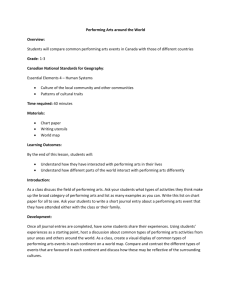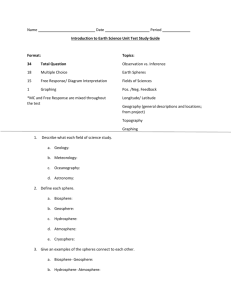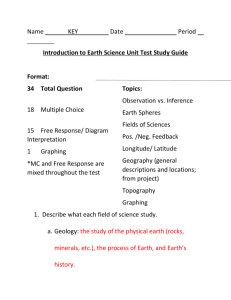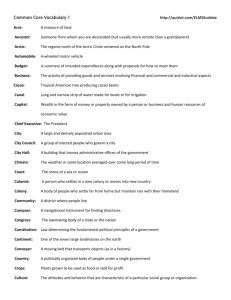File - Koopster Science
advertisement
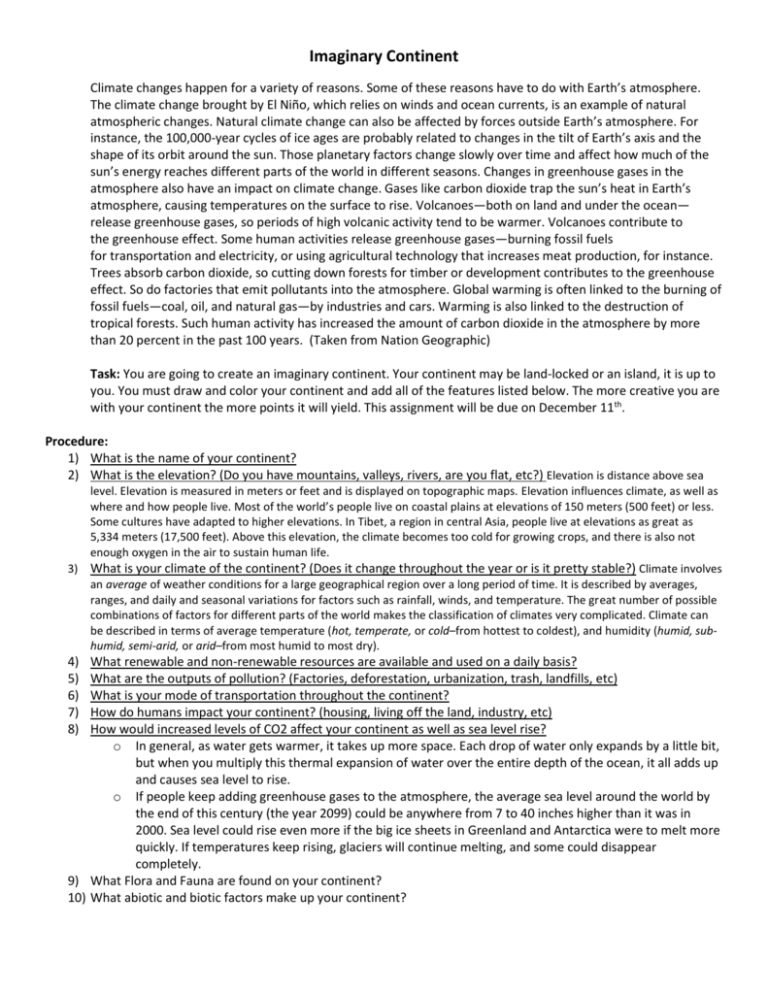
Imaginary Continent Climate changes happen for a variety of reasons. Some of these reasons have to do with Earth’s atmosphere. The climate change brought by El Niño, which relies on winds and ocean currents, is an example of natural atmospheric changes. Natural climate change can also be affected by forces outside Earth’s atmosphere. For instance, the 100,000-year cycles of ice ages are probably related to changes in the tilt of Earth’s axis and the shape of its orbit around the sun. Those planetary factors change slowly over time and affect how much of the sun’s energy reaches different parts of the world in different seasons. Changes in greenhouse gases in the atmosphere also have an impact on climate change. Gases like carbon dioxide trap the sun’s heat in Earth’s atmosphere, causing temperatures on the surface to rise. Volcanoes—both on land and under the ocean— release greenhouse gases, so periods of high volcanic activity tend to be warmer. Volcanoes contribute to the greenhouse effect. Some human activities release greenhouse gases—burning fossil fuels for transportation and electricity, or using agricultural technology that increases meat production, for instance. Trees absorb carbon dioxide, so cutting down forests for timber or development contributes to the greenhouse effect. So do factories that emit pollutants into the atmosphere. Global warming is often linked to the burning of fossil fuels—coal, oil, and natural gas—by industries and cars. Warming is also linked to the destruction of tropical forests. Such human activity has increased the amount of carbon dioxide in the atmosphere by more than 20 percent in the past 100 years. (Taken from Nation Geographic) Task: You are going to create an imaginary continent. Your continent may be land-locked or an island, it is up to you. You must draw and color your continent and add all of the features listed below. The more creative you are with your continent the more points it will yield. This assignment will be due on December 11th. Procedure: 1) What is the name of your continent? 2) What is the elevation? (Do you have mountains, valleys, rivers, are you flat, etc?) Elevation is distance above sea 3) 4) 5) 6) 7) 8) level. Elevation is measured in meters or feet and is displayed on topographic maps. Elevation influences climate, as well as where and how people live. Most of the world’s people live on coastal plains at elevations of 150 meters (500 feet) or less. Some cultures have adapted to higher elevations. In Tibet, a region in central Asia, people live at elevations as great as 5,334 meters (17,500 feet). Above this elevation, the climate becomes too cold for growing crops, and there is also not enough oxygen in the air to sustain human life. What is your climate of the continent? (Does it change throughout the year or is it pretty stable?) Climate involves an average of weather conditions for a large geographical region over a long period of time. It is described by averages, ranges, and daily and seasonal variations for factors such as rainfall, winds, and temperature. The great number of possible combinations of factors for different parts of the world makes the classification of climates very complicated. Climate can be described in terms of average temperature (hot, temperate, or cold–from hottest to coldest), and humidity (humid, subhumid, semi-arid, or arid–from most humid to most dry). What renewable and non-renewable resources are available and used on a daily basis? What are the outputs of pollution? (Factories, deforestation, urbanization, trash, landfills, etc) What is your mode of transportation throughout the continent? How do humans impact your continent? (housing, living off the land, industry, etc) How would increased levels of CO2 affect your continent as well as sea level rise? o In general, as water gets warmer, it takes up more space. Each drop of water only expands by a little bit, but when you multiply this thermal expansion of water over the entire depth of the ocean, it all adds up and causes sea level to rise. o If people keep adding greenhouse gases to the atmosphere, the average sea level around the world by the end of this century (the year 2099) could be anywhere from 7 to 40 inches higher than it was in 2000. Sea level could rise even more if the big ice sheets in Greenland and Antarctica were to melt more quickly. If temperatures keep rising, glaciers will continue melting, and some could disappear completely. 9) What Flora and Fauna are found on your continent? 10) What abiotic and biotic factors make up your continent?
